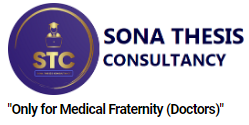
Research Paper
A research manuscript is a formal, written document that presents the findings and outcomes of a research study. It follows a structured format and is typically submitted to academic journals for peer review and publication. Here’s a general outline of the components you might find in a research manuscript:
- Title:
- A concise and informative title that reflects the main focus of the study.
- Abstract:
• A brief summary of the entire research, including the research question, methodology, results, and conclusions.
- Introduction:
- Background and context of the study.
- Clear statement of the research question or hypothesis.
- Review of relevant literature.
- Purpose and objectives of the research.
- Methods:
- Detailed description of the research design, participants, and data collection methods.
- Any statistical or analytical techniques used.
- Ethical considerations and approval.
- Results:
- Presentation of the findings in a clear and organized manner.
- Tables, figures, and graphs may be included to illustrate data.
- Raw data or detailed statistics may be placed in an appendix.
- Discussion:
• Interpretation of the results in the context of the research question.
• Comparison with existing literature.
• Limitations of the study.
• Implications for future research.
- Conclusion:
- Summary of the main findings.
- Practical and theoretical implications.
- Suggestions for future research.
- References:
- A comprehensive list of all sources cited in the manuscript.
- Acknowledgments:
- Recognition of individuals or organizations that contributed to the research but may not be listed as authors.
10.Appendices:
- Additional material such as questionnaires, survey instruments, or supplementary data.
It’s crucial to adhere to the specific guidelines and requirements of the targeted journal when preparing a research manuscript. Each journal may have its own formatting and submission guidelines. Additionally, the manuscript should be written with clarity, precision, and adherence to ethical standards in research. STC adhere to all the crucial NMC guidelines for research publication.
Types of Research Manuscript
Research manuscripts can take various forms, depending on the nature and purpose of the study. Here are some common types of research manuscripts:
- Original Research Articles:
- These manuscripts present new and original research findings.
- Include sections on introduction, methods, results, discussion, and conclusion.
- Common in scientific and medical journals.
- Review Articles:
- Surveys and summarizes existing literature on a particular topic.
- Provides a comprehensive overview of the current state of knowledge in a field.
- May include meta-analyses.
- Case Studies:
- Detailed descriptions and analyses of one or more specific cases or instances.
- Often used in medical, social sciences, or business research.
- Meta-Analyses:
• Analyzes and synthesizes data from multiple studies on a specific topic.
• Aims to provide a more comprehensive understanding by combining results from different studies. - Systematic Reviews:
• Rigorous and systematic examination of all available research on a particular topic.
• Follows a predefined protocol to minimize bias.
• May or may not include a meta-analysis. - Methodology Papers:
• Focus on the development or refinement of research methods.
• Provides detailed descriptions of methodologies, instruments, or experimental procedures. - Commentaries or Opinion Pieces:
- Expresses the author’s opinion on a specific topic.
- Often discusses recent developments, controversies, or emerging trends in the field.
- Editorials:
- Short articles written by journal editors or invited experts.
- Provides commentary on issues related to the field or introduces special journal issues.
- Letters to the Editor:
- Short communications expressing opinions, corrections, or responses to previously published articles.
10.Perspective Articles:
- Presents a particular viewpoint on a topic, often based on the author’s experiences or insights.
- May not necessarily present new research but offers a unique perspective on existing knowledge.
11.Thesis or Dissertation:
- Longer manuscripts that represent the culmination of a graduate student’s research work.
- Include extensive literature reviews, methodologies, results, and discussions.
Understanding the type of manuscript appropriate for a particular research project is essential for effective communication within the academic and scientific community. STC carefully choose the format that best suits their (Health professionals) research objectives and aligns with the requirements of the targeted publication venue.